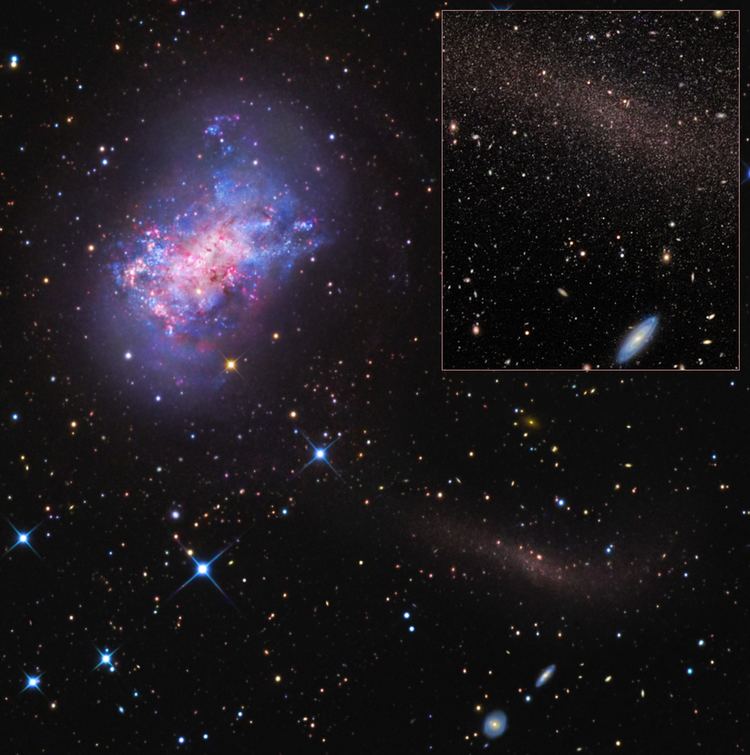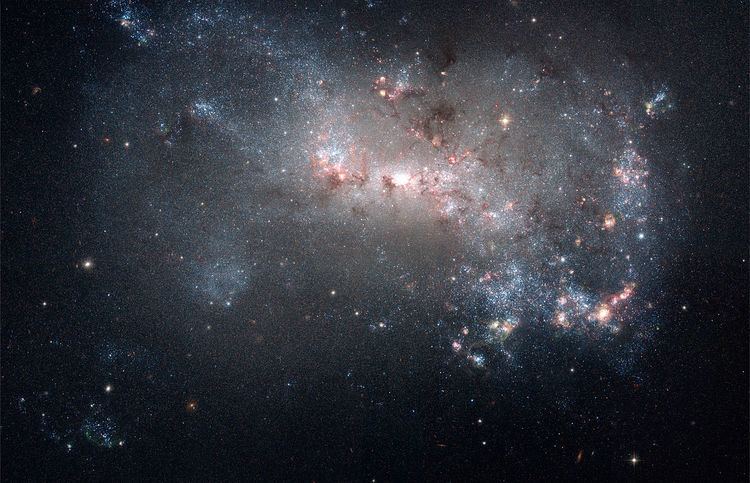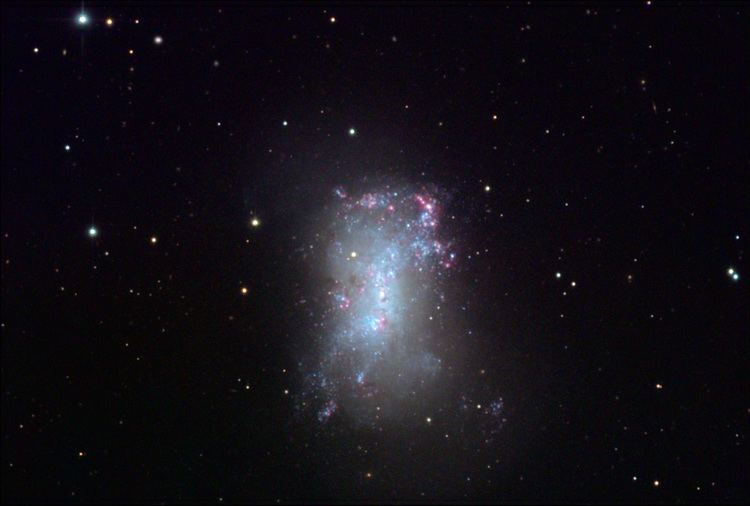Right ascension 12 28 11.9 Redshift 207 ± 4 km/s Type IBm Magnitude 10 Apparent magnitude (V) 10 | Declination +44° 05′ 40″ Distance ~12 Mly (~ 3.6 Mpc) Apparent size (V) 6′.2 × 4′.4 | |
 | ||
Similar NGC 4244, NGC 5005, NGC 4236, NGC 4559, NGC 2775 | ||
Ngc 4449 irregular galaxy zooming panning on
NGC 4449 (also known as Caldwell 21) is an irregular galaxy in the constellation Canes Venatici. It is located about 12 million light-years away, part of the M94 Group (the Canes Venatici I Group), a galaxy group relatively close to the Local Group containing the Milky Way.
Contents

Zoom in the galaxy ngc 4449
Characteristics

This galaxy is similar in size and brightness, and often compared to, the Milky Way's satellite galaxy, the Large Magellanic Cloud (LMC). NGC 4449 has a general bar shape, also characteristic of the LMC, with scattered young blue star clusters.

Unlike the Large Magellanic Cloud, however, NGC 4449 is considered a starburst galaxy due to its high rate of star formation (twice the one of the LMC) and includes several massive and young star clusters, one of them in the galaxy's center.
Photos of the galaxy show the pinkish glow of atomic hydrogen gas, the telltale tracer of massive star forming regions.
NGC 4449 is surrounded by a large envelope of neutral hydrogen that extends over an area of 75 arc minutes (14 times larger than the optical diameter of the galaxy). The envelope shows distortions and irregularities likely caused by interactions with nearby galaxies.
Interactions with nearby galaxies are thought to have influenced star formation in NGC 4449 and, in fact, in 2012 two small galaxies have been discovered interacting with this galaxy: a very low surface brightness disrupted dwarf spheroidal with the same stellar mass as NGC 4449's halo but with a ratio of dark matter to stellar matter between 5 and 10 times that of NGC 4449 and a highly flattened globular cluster with two tails of young stars that may be the nucleus of a gas-rich galaxy. Both satellites have apparently been disrupted by NGC 4449 and are now being absorbed by it.
